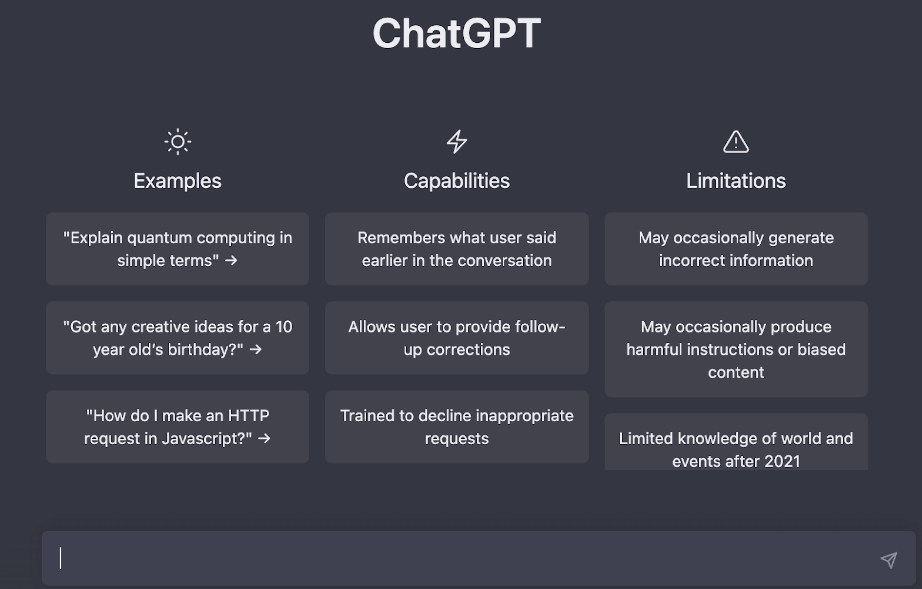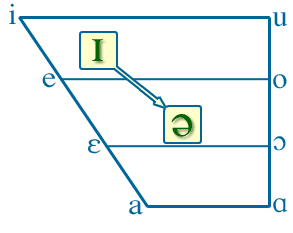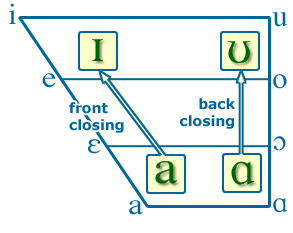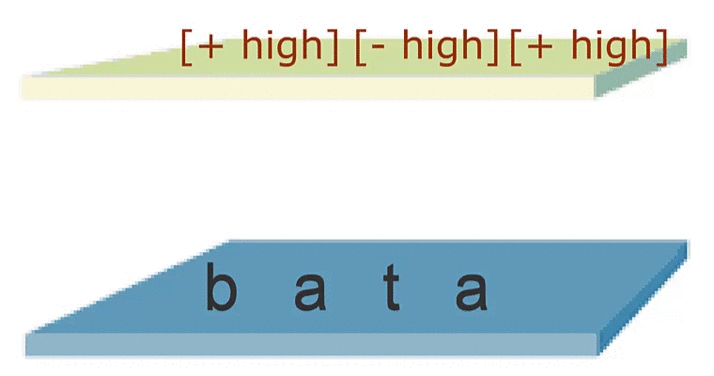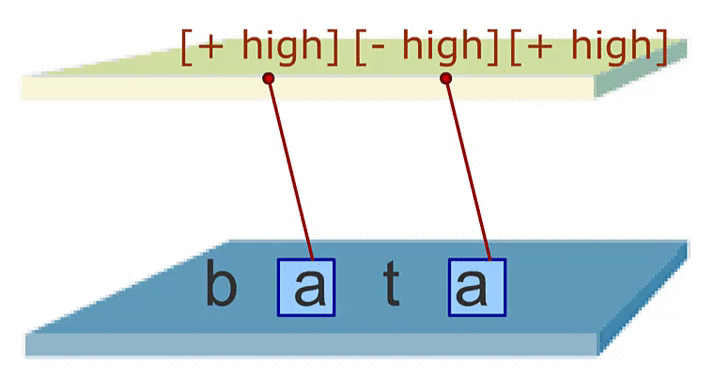Demo Glossary
This glossary is a fragment of the big VLC Glossary that hosts more than 1,000 entries. It hosts only those terms that are required for the demo-units of this demo course.
Special | A | B | C | D | E | F | G | H | I | J | K | L | M | N | O | P | Q | R | S | T | U | V | W | X | Y | Z | ALL
A |
|---|
C |
|---|
ChatGPT
(Generated by ChatGPT-3, 15 March 2023, post-edited by J. Handke) | |
D |
|---|
Diphthongs, Centering/InglidingDiphthongs are defined as centering or ingliding if a movement of the tongue from a peripheral to a central position occurs.
| |
Diphthongs, Closing/UpglidingDiphthongs are defined as closing or upgliding if a movement of the tongue from a low or central to a high (closed) position occurs. There are two variants of closing/upgliding diphthongs:
| |
G |
|---|
German, Standard (ISO-Code: DEU)The examples illustrate the synthetic fusional character of German. Furthermore, Standard German exhibits two word order patterns: SVO in main clauses and SOV in subordinate clauses:
| ||||||||||||||
J |
|---|
Japanese (ISO-Code: JPN)The examples below illustrate the strong agglutinating character of Japanese. Furthermore, it is obvious that Japanese exhibits a strict SOV order irrespective of the sentence type:
| ||||||||||||||
L |
|---|
Linear Ordering - Parameter Settings for PDE
Heads are in boldface, modifiers appear between square brackets [ ]. | ||||||
Low Back MergerIn Canadian and many regional variants in Northeast America, the phonemes /o/ and /oh/ have merged, so that cot and caught, Don and dawn, hock and hawk, collar and caller, are all homophones. This 'cot-caught merger' is complete in Canada, the West, Western Pennsylvania and Eastern New England. | ||
N |
|---|
NL-Phonology: The Dumping Principle
If after the application of mapping some tones are still free, they will be linked to the last vowel to the right. | |
NL-Phonology: The Mapping Principle
The mapping principle associates vowels with tones in a 1-to-1 fashion from left to right until we run out of vowels or of tones. | |

